Battery C Rating is a fundamental concept that describes the rate at which a battery can be charged or discharged based on its rated capacity. This parameter is essential in solar power systems, electric vehicles, and electronic devices as it directly affects the performance, lifespan, and safety of batteries.

What is Battery C Rating?
The C-Rate represents the ratio of the charge or discharge current to the rated capacity of the battery. Its value determines how long it will take for the battery to be fully charged or discharged.
Think of the battery C rating as the rate at which a battery operates. For example, a rate of 1C means that the battery can deliver all of its energy in one hour. On the other hand, a rate of 0.5C means that the battery is slower. In the latter case, this battery would be discharged in two hours.
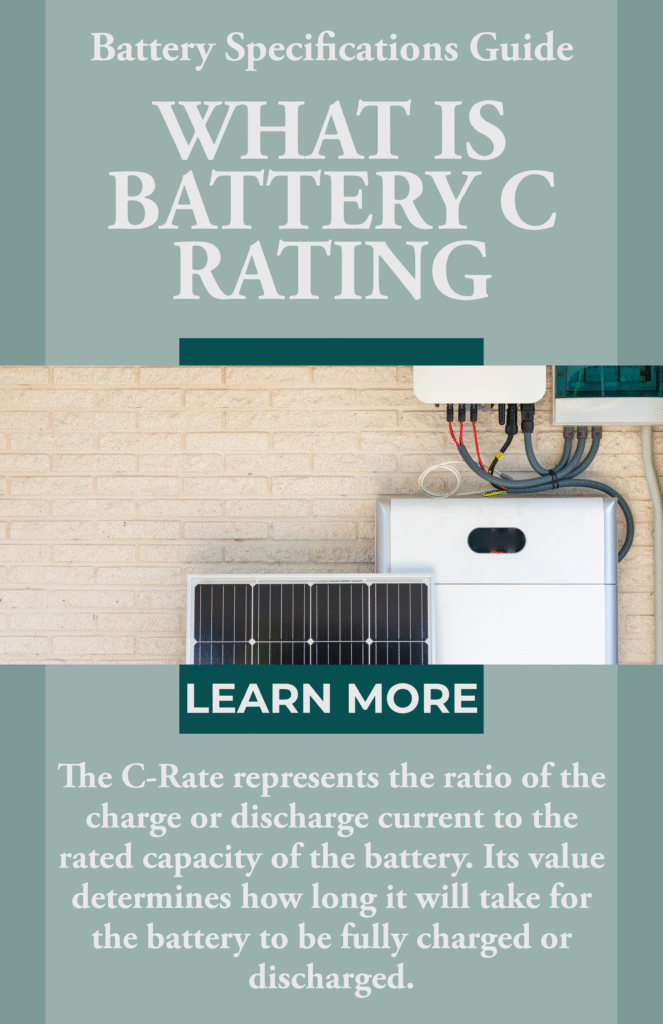
How is C-Rate calculated?
You can calculate the battery c rating with the following formula:
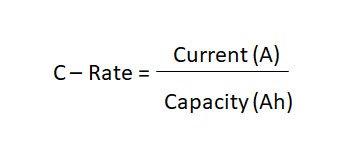
For example:
A 200 Ah battery with a 20 A load
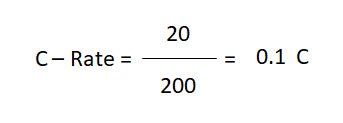
So, this battery lasts 10 hours.
Table with battery C rates
The following table shows different battery C rates along with their service times. It is essential to note that a discharging battery can cause some internal energy loss. At higher C rates, some energy may be lost as heat, reducing capacity by 5% or more.
| Battery C Rating | Charge and Discharge Time |
| 0.05 C or C/20 | 20 hours |
| 0.1 C or C/10 | 10 hours |
| 0.2 C or C/5 | 5 hours |
| 0.5 C or C/2 | 2 hours |
| 1 C | 1 hour |
| 2 C | 30 minutes |
| 5 C | 12 minutes |
| 10 C | 6 minutes |
| 20 C | 3 minutes |
| 30 C | 2 minutes |
Solar batteries typically operate at low C rates (0.1C to 0.5C) to provide consistent power over long periods, such as overnight. In the case of lithium-ion batteries, they typically support high rates and are ideal for applications with variable loads. In contrast, lead-acid batteries prefer low C rates to maintain their longevity.
How Temperature Affects C-Rate
A battery’s C-rate can vary in practice because of climate and temperature. Although the C-rate is a theoretical value based on the battery’s nominal capacity and current, environmental conditions can influence actual battery performance, especially in extreme climates.
1. Low Temperatures:
Cold temperatures slow down chemical reactions within the battery, reducing its effective capacity and increasing internal resistance. This can cause a theoretically safe C-rate to result in slower, less efficient discharge. Also, low temperatures can limit the battery’s ability to accept high charge rates.
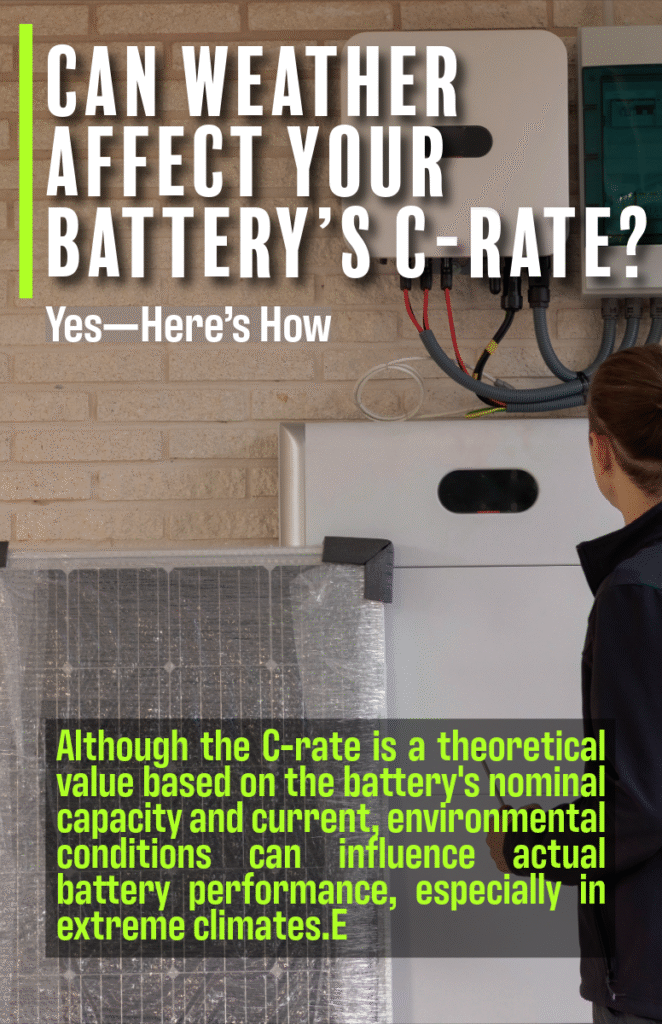
2. High Temperatures:
In hot climates, batteries may experience a decrease in their internal resistance, facilitating higher discharge currents. However, the associated overheating can accelerate the degradation of internal materials.

KEY INFO
This means that in colder climates, a battery with a higher C-rate may be needed to provide the required current, while in warmer climates, a lower C-rate may be enough. In conclusion, lithium batteries will charge more quickly in warmer climates and more slowly in colder climates.
Importance of C-Rate
The importance of C-Rate lies in its direct impact on battery performance and longevity. Higher C-rates can result in faster charge and discharge times, which is better for applications that need a quick supply of power. For example, power tools and electric vehicles.
However, these benefits come at a cost. High C-rates can stress the battery, generate heat, and accelerate degradation processes such as electrode material breakdown and solid electrolyte interphase (SEI) layer growth. So, understanding and selecting the appropriate C-rate is crucial to balancing performance with the lifespan of lithium-ion batteries.
C-rate is a critical factor in battery selection and design. So, it guides engineers and consumers in choosing batteries that meet their specific needs. For applications requiring rapid discharge of power, batteries with a high C-rate are preferred. On the contrary, for devices with lower power requirements over extended periods, a lower C-rate might be better, improving battery longevity and stability.
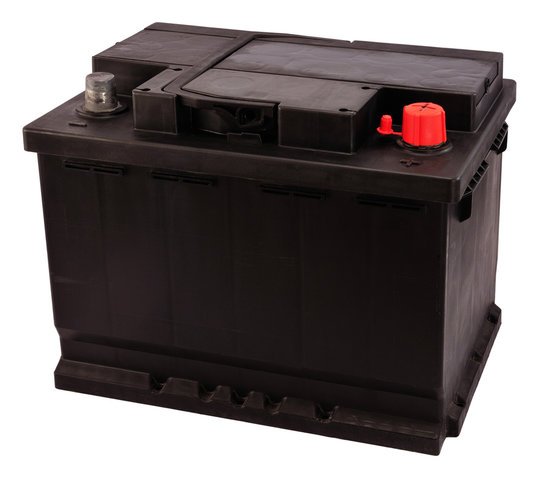
FAQs
What happens if the C-rating is too low?
If a battery’s C-rating is too low, it may not be able to provide the current needed for specific applications. This can lead to reduced performance, voltage drop, and possible damage to the battery or connected devices.
An insufficient C rating can result in the battery being unable to deliver the current required for specific applications. This can lead to reduced performance and voltage drop during operation. Also, inadequate current delivery can potentially damage the battery or connected devices.
KEY INFO
It is important to choose a battery with an appropriate C rating that matches the power demands of the application. By selecting a battery with a sufficient C rating, you can ensure optimal performance and avoid potential problems resulting from a low C rating.
Is a higher C rating better for lithium-ion batteries?
No. While a high C rate can provide a faster charging speed, it will also reduce the efficiency of lithium-ion batteries, increase heat, and reduce battery life.
Which devices need high C rates for batteries?
Devices that need high C rates for batteries include RC models, drones, robotics, and vehicle jump starters. These applications require batteries capable of generating powerful bursts of power in a short period.
- RC (radio-controlled) models: RC cars, aeroplanes, boats, and drones often require high C rates to provide the power needed for rapid acceleration and manoeuvrability.
- Robotics: Robotic applications, such as robotic arms or autonomous vehicles, may require high C rates to power motors and perform dynamic movements.
- Vehicle jump starters: Batteries with high C rates are essential for vehicle jump starters to deliver a sudden surge of power to start a vehicle.
- Power tools: Many power tools, such as drills and power saws, require batteries with high C rates to provide the power needed for heavy-duty tasks.
- Emergency Backup Systems: Backup power systems such as uninterruptible power supplies (UPS) can use batteries with high C-rates to provide instant power during outages.
By using batteries with high C-rates in these applications, you can ensure the power and performance for your specific needs.

Conclusion
While high C-rates can be beneficial, they also pose challenges. The heat generated during rapid charging and discharging can affect battery safety, with the risk of thermal runaway in extreme cases. Manufacturers must incorporate safety mechanisms such as temperature sensors and voltage regulators to prevent overheating and overcharging. Also, repeated stress from high C-rates can decrease a battery’s lifespan, requiring a balance between immediate performance and long-term durability.






Leave a Reply